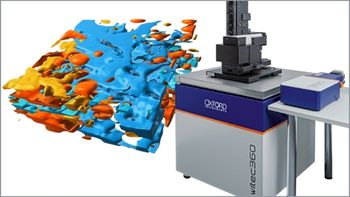
The Fourth FT Advantage: Interferometry as a Fourier Filter
Wednesday, June 22, 2022 at 2pm EDT|11am PDT|7pm BST|8pm CEST Do you know about the fourth advantage of Fourier transform in infrared spectroscopy? Join us to learn how the interferometric measurement can easily separate artifacts caused by physical vibration from the true optical signal of interest.
Register Free:
Event Overview:
Three advantages provided by Fourier transform (FT) spectroscopy in the mid-infrared and near -infrared (NIR) are well known: the Fellgett Advantage (multiplex advantage), the Jacquinot Advantage (throughput advantage), and the Connes Advantage (wavelength precision). Anyone having compared the measurement time, signal-to-noise ratio, and wavelength precision of a FT instrument to a monochromator-based instrument can see the difference immediately. The FT advantages responsible for improved signal-to-noise ratio are still applicable in NIR measurements, but do not have as significant an impact on measured spectra compared to the mid-infrared spectral range. The wavelength precision advantage is just as significant in the NIR as in the mid-Infrared region and is responsible for the significantly better long-term instrument stability.
There is a fourth advantage to FT spectroscopy that is often overlooked, or not mentioned with the three more well-known advantages. The interferometer in an FT instrument is actually a Fourier filter capable of separating noise caused by physical vibrations from the optical signal being measured. In process analytical technologies (PAT), the benefit of the Fourier filter advantage is nearly as important as the wavelength precision advantage. In fact, FT instruments used in PAT applications are less sensitive to vibration than scanning monochromator instruments or even diode array instruments used in NIR PAT applications.
In this presentation we will show how the interferometric measurement can easily separate artifacts caused by physical vibration from the true optical signal of interest. Visualization of how the Fourier filter works in FT instruments will be presented in a qualitative description. We will show effects due to physical vibration on an FT-NIR process spectrometer and how the vibration artifacts can be removed using the Fourier filter aspect of interferometry.
Key Learning Objectives:
- The fourth advantage of Fourier transform (FT) infrared spectroscopy instruments
- How the Fourier filter works in FT instruments
- The effect of physical vibration in process applications of FT-NIR
- How vibration artifacts can be removed using the Fourier filter aspect of interferometry.
Who Should Attend:
Anyone using FT-NIR spectroscopy, particularly in process applications.
For any questions please contact Jordan Ramesh: jramesh@mjhlifesciences.com
Speakers
Dean Roberts
Director of Marketing and Technology Development
Bruker Optics
Dean Roberts is currently the Director of Market Development with Bruker Optics—Applied Spectroscopy. Dean earned a BS in Chemistry from the University of Wisconsin–Madison in 1983, specializing in analytical chemistry. Actively involved in vibrational spectroscopy, including infrared, near-infrared, and Raman spectroscopy over the last 30 years, Dean has worked as an Application Scientist, Product Manager, and Field Sales Representative, first with Mattson Instruments, and then with Bruker Optics. His current role as Director of Market Development with Bruker includes identification and development of new applications for laboratory and on-line measurement of food, dairy, and agricultural products, and in development of Bruker’s Chemical and Pharmaceutical markets in North America.
Register Free:
Newsletter
Get essential updates on the latest spectroscopy technologies, regulatory standards, and best practices—subscribe today to Spectroscopy.




